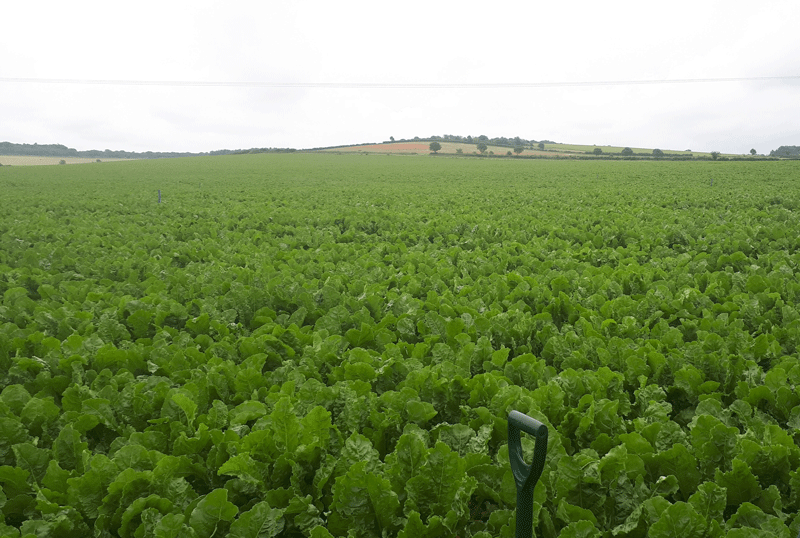Basalt rock to enhance soil’s CO2 absorption
Adding rock dust to agricultural soils in the UK could absorb up to 45% of CO2 from the atmosphere needed to reach net-zero, reveals new research.

The study, part of a multi-partner project led by the University of Sheffield, UK, shows that dissolving basalt into soil could help capture and store up to 30Mt of CO2 annually. The reactions also release nutrients that support crop growth and restore soils.
‘Basalt is a fine-grained rock produced with the rapid cooling of lava generated by volcanic eruptions. Basalt is composed of a mixture of natural minerals and is compatible with Soil Association organic fertiliser standards,’ says Professor David Beerling from the Leverhulme Centre for Climate Change Mitigation at the University. When crushed and introduced onto cropland soils, the basaltic minerals dissolve in the soil. This sets off natural chemical reactions that help capture and store CO2 in the soil and in soil drainage waters.’
The method could use existing infrastructure and therefore costs less than other CO2 removal (CDR) strategies, such as direct air capture with carbon capture storage and bioenergy crops.
‘A clear advantage of this approach to CDR is the potential to deliver major wins for agriculture in terms of lowering emissions of nitrous oxide, reversing soil acidification that limits yields and reducing demands for imported fertilisers,’ adds Beerling.
Beerling says that the advantages of reducing reliance on imported food and fertilisers have been highlighted by the war in Ukraine, which has caused the price of food and fertilisers to spike worldwide as exports of both are interrupted.
Arable farms already apply crushed rock in the form of limestone to reduce the acidity resulting from farming practices, including the use of fertilisers.
‘Managed croplands, therefore, have the infrastructure such as roads and machinery needed to undertake this approach at scale. These considerations could make it straightforward to adopt.
‘Our proposal is that changing the type of rock, and increasing the application rate, would do a similar job to applying crushed limestone but would also help capture CO2 from the atmosphere, storing it in soils and eventually the oceans.
‘Basalt rock dust has been successfully used as a fertiliser in developing countries for many years, and some UK farmers have been adding it to soil to improve productivity, but effects on carbon sequestration have not been measured.
‘We don’t yet know if, and under what circumstances, rock dust applications to cropland soils will achieve the anticipated results in terms of carbon capture and improvements to crop and soil health. There is anecdotal evidence from farmers and forestry organisations about the benefits of adding basalt to soils.’
The Leverhulme Centre is undertaking carefully monitored field trials in the USA, Australia, the UK and Malaysian Borneo, on plots ranging from 1-4ha.
These sites encompass a range of climates, soils and crops to assess the broad suitability of enhanced weathering for major agricultural ecosystems worldwide.
‘Across all our sites, we use basalt rock dust as a by-product of existing basalt mines. We spread approximately 4-5kg/m2, equivalent to about 40-50t/ha. These rates are similar to annual organic fertiliser application rates, but higher than for agricultural liming practices, which are generally undertaken every four to five years,’ says Beerling.
Provisional results are promising but ‘we are at an early stage of our long-term (10-year) programme of Leverhulme-funded research. If the evidence base stacks up, we will be able to reach out to a range of land management and farming communities with a view to scaling up’.
The Institute of Materials, Minerals and Mining is a partner of the Expert Advisory Group for this research project.

